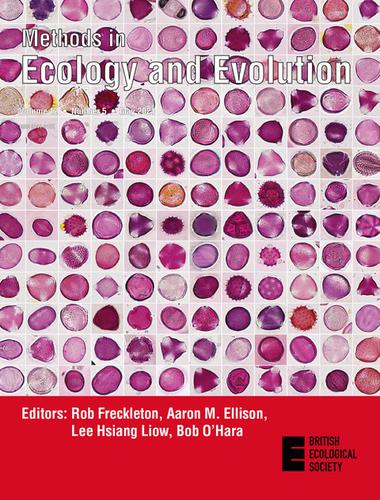当前位置:
X-MOL 学术
›
Methods Ecol. Evol.
›
论文详情
Our official English website, www.x-mol.net, welcomes your feedback! (Note: you will need to create a separate account there.)
Cover Picture and Issue Information
Methods in Ecology and Evolution ( IF 6.6 ) Pub Date : 2021-05-04 , DOI: 10.1111/2041-210x.13413
Methods in Ecology and Evolution ( IF 6.6 ) Pub Date : 2021-05-04 , DOI: 10.1111/2041-210x.13413

|
This month's cover image shows a random sample of pollen grains from a large library of fuchsine stained pollen, produced by Olsson et al. for their article ‘Efficient, automated and robust pollen analysis using deep learning’. Each image represents a pollen grain of a different species, scanned at 0.25 μm, and varying in size from <10 to >100 μm. With training, humans can learn to identify pollen based on variation in shape, features, and texture. However, some species are similar and there is also variation within species, so it is not possible to identify all species with certainty. Convoluted neural networks (CNN) can learn to identify pollen, but Olsson et al. show that they are approximately on par with humans, struggling to separate the same groups as us. As usual, though, the computers outperform us in speed, and once trained, a CNN can locate, classify and count a sample with up to 10,000 pollen in less than a minute. Thus, the method described by Olsson et al. can increase efficiency of pollen analysis dramatically, allowing large‐scale pollen analysis in situations where it was previously too expensive.
中文翻译:

封面图片和发行信息
本月的封面图片显示了由Olsson等人生产的大型品红染色花粉库中的花粉粒随机样本。他们的文章“使用深度学习进行高效,自动化和强大的花粉分析”。每个图像代表不同物种的花粉粒,以0.25μm扫描,大小从<10到> 100μm不等。通过培训,人类可以学会根据形状,特征和质地的变化来识别花粉。但是,某些物种相似,并且物种内部也存在差异,因此无法确定地识别所有物种。卷积神经网络(CNN)可以学习识别花粉,但是Olsson等人。表明他们与人类差不多,努力将与我们相同的群体分开。但是,像往常一样,计算机在速度上胜过我们,并且经过培训后 CNN可以在不到一分钟的时间内对多达10,000个花粉的样品进行定位,分类和计数。因此,Olsson等人描述的方法。可以大大提高花粉分析的效率,从而可以在以前过于昂贵的情况下进行大规模的花粉分析。
更新日期:2021-05-05
中文翻译:

封面图片和发行信息
本月的封面图片显示了由Olsson等人生产的大型品红染色花粉库中的花粉粒随机样本。他们的文章“使用深度学习进行高效,自动化和强大的花粉分析”。每个图像代表不同物种的花粉粒,以0.25μm扫描,大小从<10到> 100μm不等。通过培训,人类可以学会根据形状,特征和质地的变化来识别花粉。但是,某些物种相似,并且物种内部也存在差异,因此无法确定地识别所有物种。卷积神经网络(CNN)可以学习识别花粉,但是Olsson等人。表明他们与人类差不多,努力将与我们相同的群体分开。但是,像往常一样,计算机在速度上胜过我们,并且经过培训后 CNN可以在不到一分钟的时间内对多达10,000个花粉的样品进行定位,分类和计数。因此,Olsson等人描述的方法。可以大大提高花粉分析的效率,从而可以在以前过于昂贵的情况下进行大规模的花粉分析。


























 京公网安备 11010802027423号
京公网安备 11010802027423号